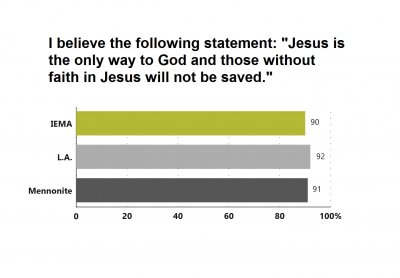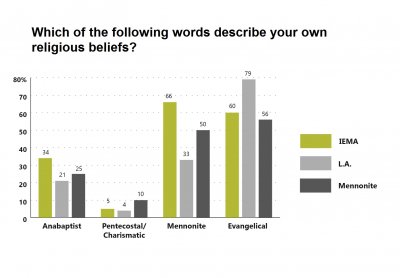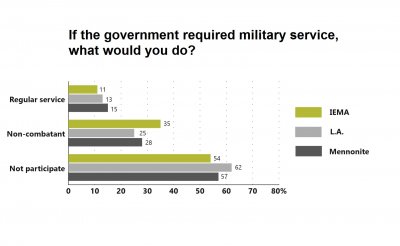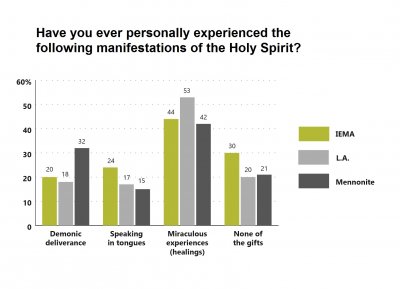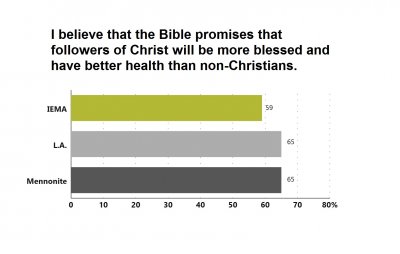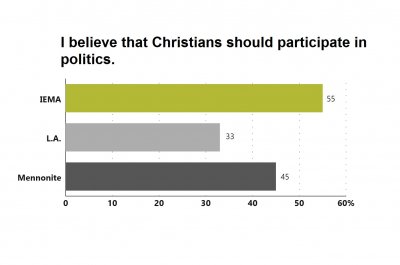Latin America
Organización Cristiana Amor Viviente (Honduras)
Congregations: 35 | Members: 10,337
Demographic Profile
- One hundred percent of congregations and 29 percent of members in the original sample participated in the GAP.
- The average size of congregations in the Organización Cristiana Amor Viviente is 29 members.
- Sixty-eight percent of respondents were women and 32 percent were men.
- Eighty-eight percent of members live in urban areas—only 12 percent in rural areas.
- The average age of respondents is 40 years, making Organización Cristiana Amor Viviente the youngest church in Latin America. Sixty-four percent are within childbearing age (18-45 years).
- Thirty-eight percent of respondents are single—a reflection of the youthfulness of this church. Nine percent are living with someone to whom they are not legally married.
- Sixty-one percent are engaged in professional occupations, the highest of any church in North or South America. Twenty-three percent are homemakers, seven percent are engaged in manual labor, and only 5 percent in agriculture.
- Seventy-four percent have graduated from high school, and 25 percent from college—the highest educational levels of any church in Latin America.
- Seventy-nine percent grew up in a home with parents who were not members of Organización Cristiana Amor Viviente, thus reflecting a church that is largely first generation members.
- Thirty-six percent of respondents reported being baptized in a church other than the Organización Cristiana Amor Viviente.
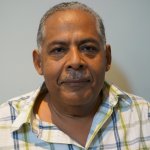
In Honduras we have not had a civil war, and people don’t have a bad opinion of military. We associate the military with projects of peace … so we have people from the military in our churches, which opens up the possibility for participating.
–Research Associate Reynaldo Vallecillo
History
Amor Viviente began in 1974 as a coffee house outreach in Tegucigalpa to at-risk youth in the home of workers with Eastern Mennonite Board of Missions and Charities. Youth who attended the gatherings reported healings, liberation, and restored relationships. Family members and others soon joined the group.
Church planting has continued to be central for Amor Viviente, with smaller discipleship groups at the heart of the movement’s organization. In 1985 Amor Viviente sent a couple to New Orleans (United States) to help start a church among the Honduran community there, and they have since planted churches in Spain, Peru, Costa Rica, and Italy. Leadership conflicts led to a church split in 1998 and membership decline, but Amor Viviente has since surpassed the membership of that period.
Almost all of our local churches have members who are inspired to write their own songs.
–Reynaldo Vallecillo
Graphs
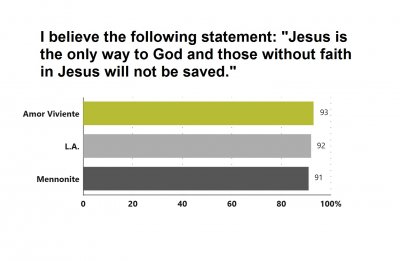
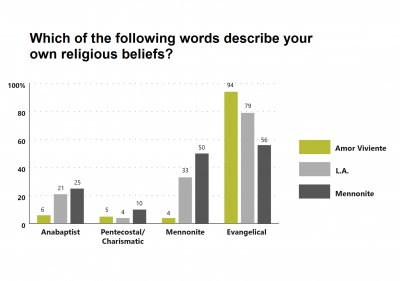
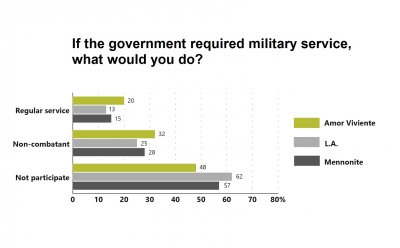
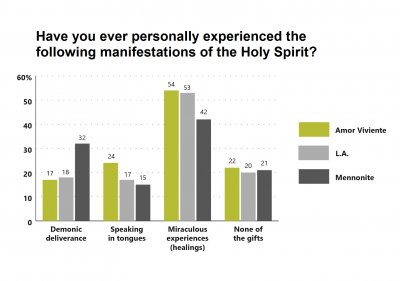
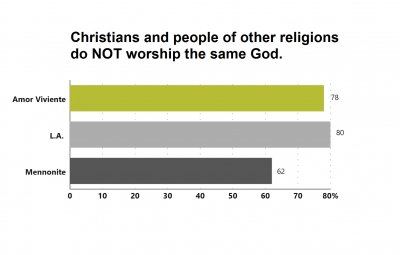
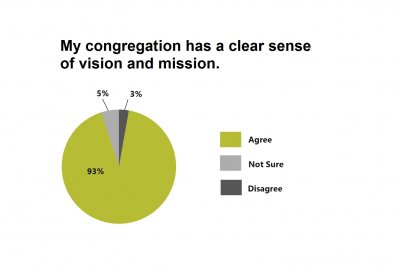
Convención Evangélica Hermanos Menonitas Enlhet (Paraguay)
Congregations: 7 | Members: 2,549
Demographic Profile
- One hundred percent of congregations and 36 percent of members in the original sample participated in the GAP.
- The average size of congregations in the Convención Evangélica Hermanos Menonitas Enlhet is 364 members.
- Of those who participated in the GAP, 50 percent were women and 50 percent were men.
- Eighty-three percent of members reported living in rural communities and 17 percent in urban areas.
- The average age of respondents is 43 years and 63 percent of women are within childbearing age (18-45 years).
- Sixty-six percent are married, 19 percent are single, one percent are separated or divorced (the lowest percentage in Latin America but a percentage shared with their sister GAP church from Paraguay), and 6 percent are living with someone to whom they are not legally married.
- Forty-nine percent are engaged in agriculture, 26 percent in manual labor, and 17 percent are homemakers.
- Eighty-five percent have not completed a high school education and 7 percent have a college degree—this is the lowest level of education among GAP churches in Latin America.
- Eighty-nine percent grew up in a home where one or both parents was a member of a congregation in the Convención Evangélica Hermanos Menonitas Enlhet.
- Ninety-six percent of respondents were baptized in a congregation of the Convención Evangélica Hermanos Menonitas Enlhet.
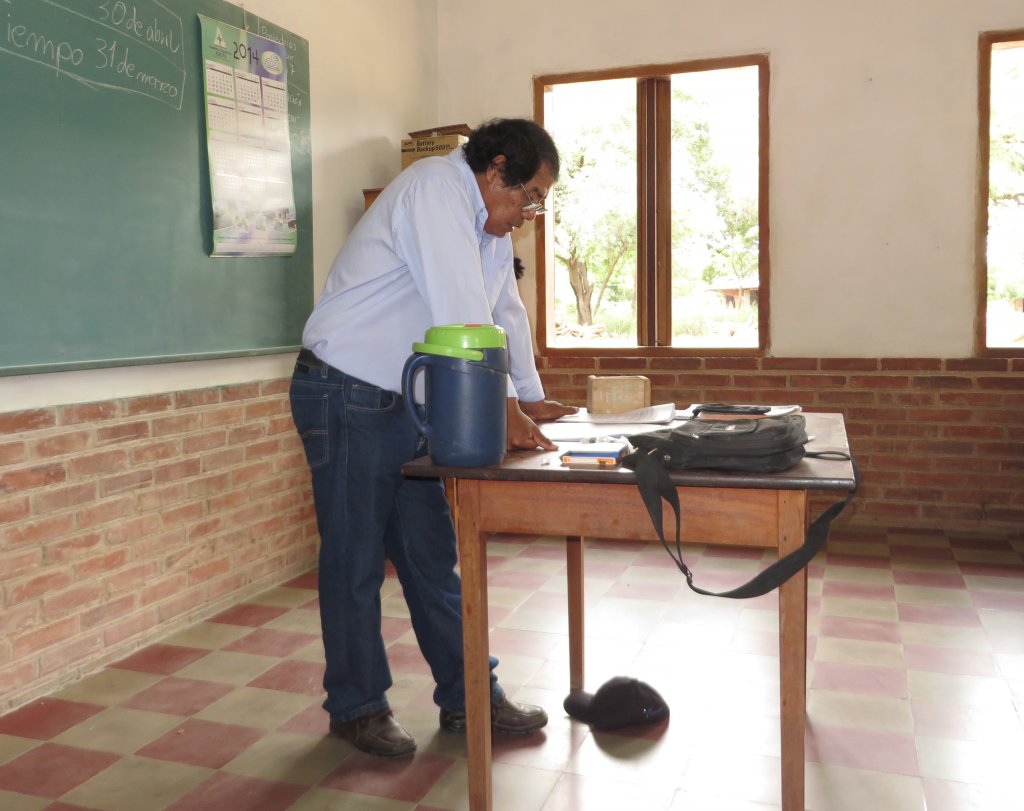
History
The first contact between indigenous Enlhet people and white Mennonite Brethren colonists took place in 1932, and colonists began mission work among the Enlhet in 1935. The Enlhet recognize the first baptisms of seven Enlhet men in 1946 as a turning point in their culture. In 1948 two of these men traveled in ox carts from Yalve Sanga to Km 145 to preach the gospel, a journey of many days.
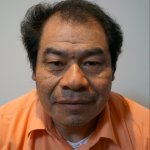
The New Testament was first translated into Enlhet Norte in 1970 by missionary Dietrich Lepp and Enlhet informant Nito Acevedo. The New Testament—Tasic Amyaa Enlhet Appayvam—was widely used in worship services, private homes, courses for pastors, conferences, in the Bible school, the agricultural school, and in the home economics school. That same year the Convención Evangélica Hermanos Menonitas Enlhet was organized. Today all of the churches have ordained pastors, evangelists, and deacons, as well as established singing groups and choirs.
Graphs
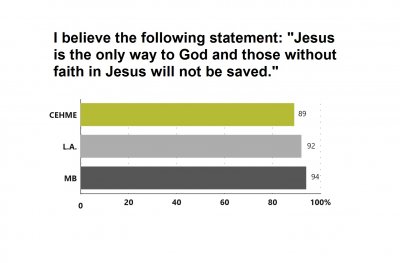
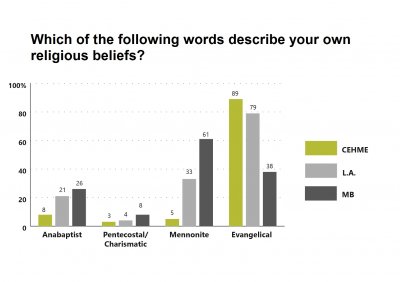
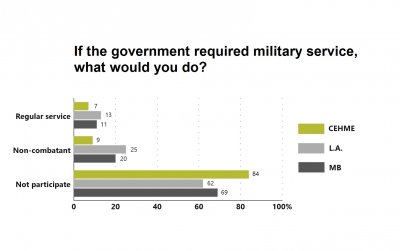
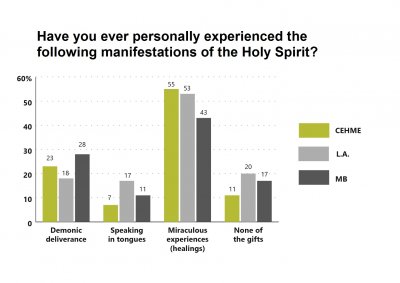
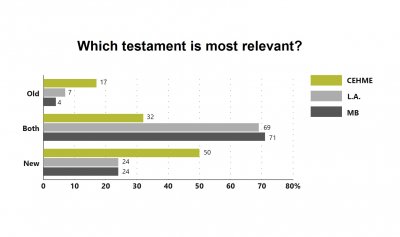
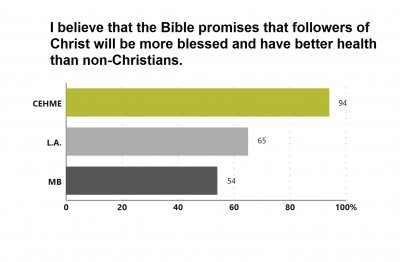
Iglesia Evangélica Menonita de Guatemala
Congregations: 8 | Members: 594
Demographic Profile
- Seventy-five percent of congregations and 31 percent of members in the original sample participated in the GAP.
- The average size of congregations in the Iglesia Evangélica Menonita de Guatemala is 74 members.
- Sixty-seven percent of respondents were women and 33 percent were men.
- Twenty-one percent of members reported living in rural communities and 80 percent in urban areas.
- The average age of respondents is 44 years and 54 percent of women are within childbearing age (18-45 years).
- Fifty-two percent are married, 22 percent are single, 8 percent are separated or divorced (the highest percentage in Latin America), and 9 percent are living with someone to whom they are not legally married.
- Thirty-seven percent are homemakers, 9 percent are engaged in agriculture, 6 percent in manual labor, and 43 percent are professionals.
- Forty-eight percent graduated from high school and 11 percent from college.
- One-third grew up in a home where one or both parents was a member of a congregation in the Iglesia Evangélica Menonita de Guatemala.
- Fifty-seven percent of respondents were baptized in a congregation of the Iglesia Evangélica Menonita de Guatemala, and 39 percent reported being baptized in a different church.

[The GAP] has invited us to come into dialogue, not only among our local churches, but also with other Anabaptist groups, wherein we discover new paths for our life in faith.
–Research Associate César Montenegro
History
Mennonite presence in Guatemala began in the 1960s with North American missionary work among the indigenous Kekchi population, but expanded in the 1970s when missionaries began an outreach in the capital city among the Spanish-speaking population. The Spanish-speaking conference is today known as the Iglesia Evangélica Menonita de Guatemala. Mennonite relief work following the 1976 earthquake supported the growth and consolidation of the Mennonite church in Guatemala City. Casa Horeb was founded a few years later in 1979 and has been an important source of leadership for the denomination, as well as a center for Mennonite activities in the city. Despite its impact, the conference has never been large numerically. As of 2015 there were eight congregations in the city—two in the city center and six further out in the neighborhoods that ring the city.
Challenges
For the most part, the survey was implemented in local congregations following the Sunday morning worship service. Unfortunately not all church members were able to stay after and complete the survey along with the others.
Graphs
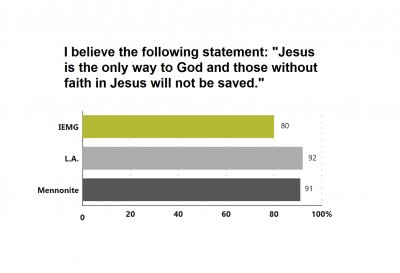
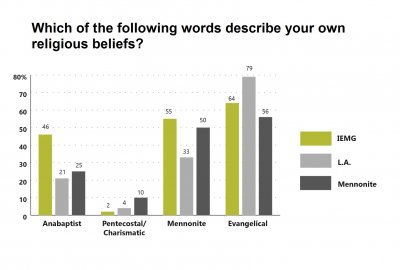
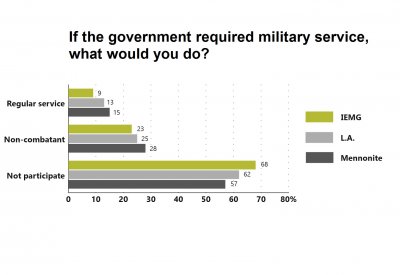
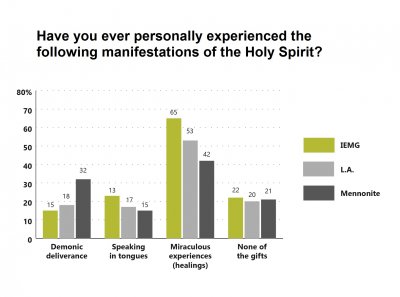
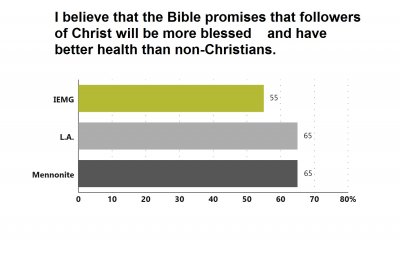
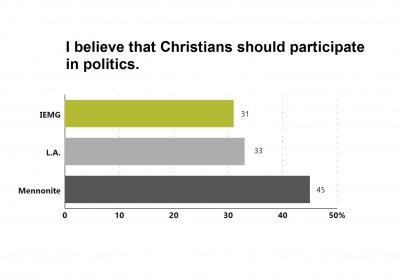
Iglesias Hermanos Menonitas de Colombia
Congregations: 46 | Members: 2,181
Demographic Profile
- One-hundred percent of congregations in the original sample participated in the GAP—because not all congregations reported membership size we could not calculate the response rate for members.
- The average size of congregations in the Iglesias Hermanos Menonitas de Colombia is 68 members.
- Sixty-two percent of respondents in the profile were women and 38 percent were men.
- Sixty-four percent of members reported living in urban areas and 37 percent in rural areas.
- The average age of respondents is 47 years and forty-nine percent are within childbearing age (18-45 years).
- Twenty-eight percent of members are single. Fifty-five percent are married and five percent live with someone to whom they are not legally married.
- A large percentage of respondents are homemakers (37%), 22 percent are engaged in agriculture, and only 12 percentage are professionals.
- Forty-five percent graduated from high school and 13 percent are college graduates.
- Seventy-three percent grew up in a home where neither parent was a member of a Hermanos Menonitas congregation.
- Twenty-three percent of members were baptized in a church other than a Hermanos Menonitas congregation and 74 percent have been baptized in a Hermanos Menonitas congregation.

In Bogotá we face a big challenge with megachurches who are promising a cheap prosperity gospel. [This survey] confirmed that it is crucial to emphasize Anabaptist principles. We also need to give more attention to the training of pastors.
–Luz Elena Franco Soto, IHMC representative
History
The Mennonite Brethren Church in Colombia began in 1946 with the arrival of Russian-Canadian missionaries to the regions of Valle del Cauca and Chocó. In the early years, converts faced significant opposition, and mission schools and clinics were repeatedly closed by the government. In the 1960s toleration of Protestants increased, and the Mennonite Brethren began intensive church planting in the cities.
By the early 1980s the Mennonite Brethren had churches in Chocó, Valle del Cauca, and the capital city of Bogotá. Today the denomination is officially divided into these three distinct geographical and cultural regions for administrative purposes. In recent years the churches in Valle del Cauca and Chocó have most directly experienced strain and threat as a result of Colombia’s armed conflict, and church ministries have grown in response. Church planting and mission continue to be central, and the denomination has sent missionaries to Panama and Mexico.
Despite the fact that Colombia is a violent country and lives in continuous war, the GAP confirmed that our members clearly reject war and the death penalty.
–Luz Elena Franco Soto, IHMC representative
Graphs
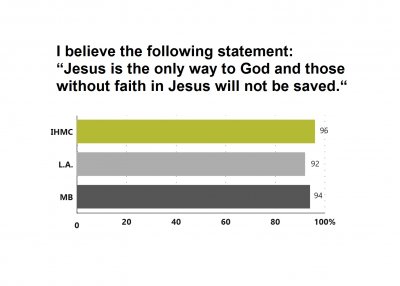
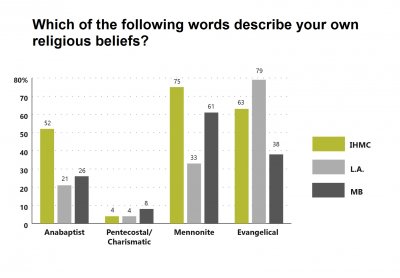
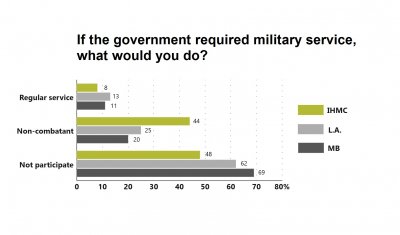
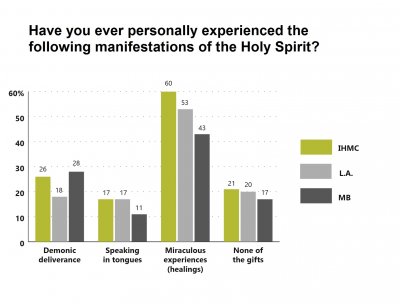
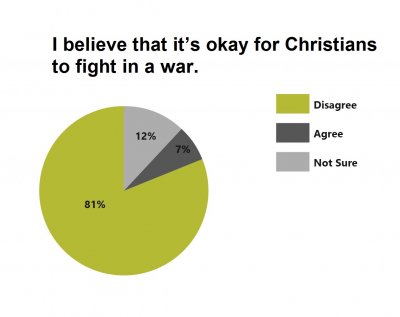
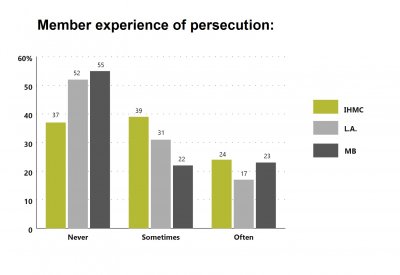
Vereinigung der Mennoniten Brüder Gemeinden Paraguays
Congregations: 30 | Members: 3,164
Demographic Profile
- One hundred percent of congregations and 29 percent of members in the original sample participated in the GAP.
- The average size of congregations in the Vereinigung der Mennoniten Brüder Gemeinden Paraguays is 105 members.
- Of those who participated in the GAP, fifty percent were women and 50 percent were men.
- Forty-six percent of members reported living in rural communities and 54 percent in urban areas.
- The average age of respondents is 45 years and 55 percent of women are within childbearing age (18-45 years).
- Eighty percent are married, 15 percent are single, one percent are separated or divorced, 2 percent are widowed, and 2 percent are living with someone to whom they are not legally married.
- Thirty-one percent are homemakers, 33 percent are professionals, 17 are engaged in agriculture, and 11 do manual labor. Eight percent reported their occupation as church related—the highest percentage of any GAP church in Latin America.
- Fifty-nine percent have completed high school and 23 percent have a college degree.
- Fifty-five percent grew up in a home where one or both parents was a member of a congregation in the Vereinigung der Mennoniten Brüder Gemeinden Paraguays and 21 percent in a different church.

We are truly a growing worldwide family that has been blessed by God.
–Kornelius Neufeld, representative of VMBGP
History
In 1930 a large group of Russian Mennonites migrated to Paraguay and established the first church in Fernheim. Between 1937 and 1963, additional churches were founded in Friesland, Volendam, Neuland, Blumental, and Asunción.

Growing missionary work led to the founding of a Mennonite Brethren Church Association in Paraguay in 1961 (changing its name to Vereinigung der Mennoniten Brüder Gemeinden Paraguays in 1993). This new conference was characterized by its missionary spirit, including strong support for the mission organization “Light to the Indians.” There was also a renewed commitment to young people’s groups and Sunday School education. Beginning in the 1960s many Mennonite Brethren churches began mission work among the Spanish-speaking population. Today seven of the association’s churches are Germans-speaking and twenty-three are Spanish-speaking.
The association is heavily involved in education as a form of ministry. In addition to their involvement with the Protestant Union University, they support a number of private schools for neighborhood children and operate a seminary, a teaching training school, and a bilingual high school.
Graphs
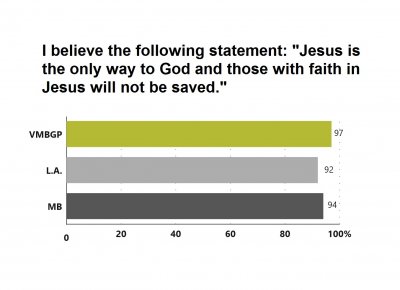
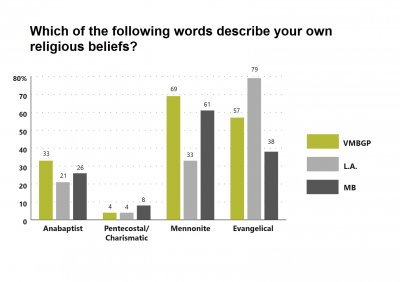
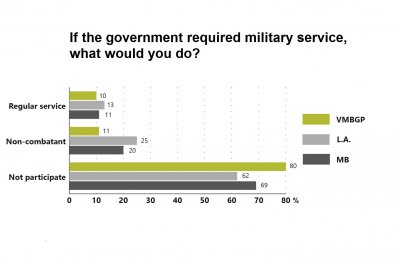
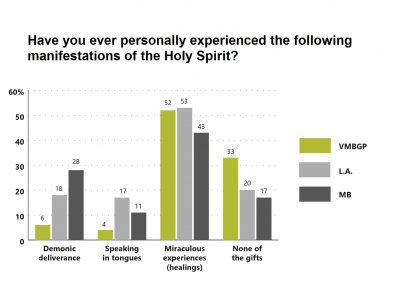
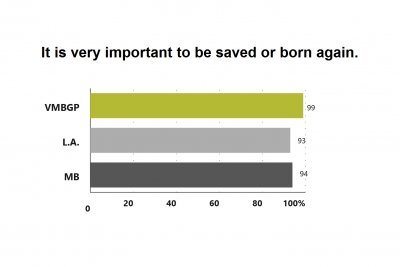
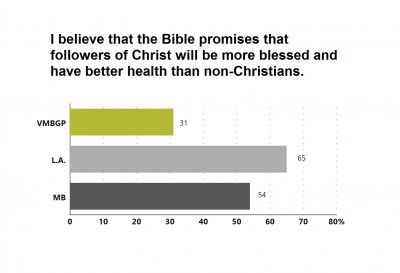
Aliança Evangélica Menonita (Brazil)
Congregations: 31 | Members: 845
Demographic Profile
- Twenty-nine percent of congregations and 23 percent of members in the original sample participated in the GAP.
- The average size of congregations in the Aliança Evangélica Menonita is 27 members.
- Of those who participated in the GAP, fifty-seven percent were women and 43 percent were men.
- Ninety-eight percent of members reported living in urban communities and just 2 percent in rural areas.
- The average age of respondents is 43 years and 57 percent of women are within childbearing age (18-45 years).
- Twenty-one percent do not have a high school diploma, 58 percent have at least a high school diploma, and 22 percent achieved a college degree.
- Sixty-two percent are married, 21 percent are single, and 7 percent are living with someone to whom they are not legally married.
- Among Brazilian Mennonites, 53 percent are engaged in manual labor, 23 percent are professionals, 17 percent homemakers, and only one percent are farmers.
- Seventy-nine percent of members did not grow up in homes where either parent was a member of the Aliança Evangélica Menonita—only 14 percent grew up in a home where both parents were members.
- Seventy-one percent have been baptized in the Aliança Evangélica Menonita, while 25 percent were baptized in a different church.
History
In 1954 Mennonite missionaries from North America arrived in São Paulo state. Within the next few years, churches were established in São Paulo, Valinhos, and Sertaozinho. Another work was started simultaneously in Araguacema, in the Amazonian state of Goiás. Today Aliança Evangélica Menonita (AEM) has Portuguese-speaking Mennonite churches in five distinct geographical regions. In 1998 AEM founded Junta Menonita de Missoes Internacionais (JMMI) to send missionaries to Mozambique and Albania, efforts that resulted in churches in both locations. Currently JMMI is engaged in church planting within Brazil. AEM is also involved in social ministry, counseling, and creating original evangelical worship music and choreography.
Graphs
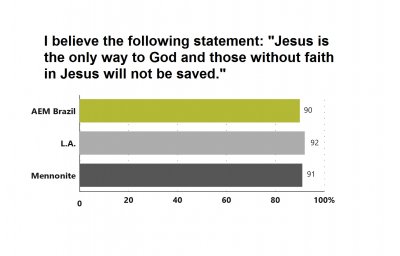
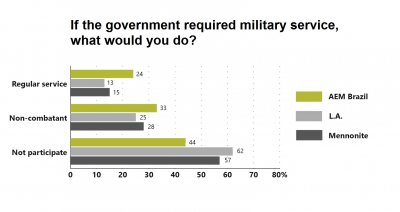
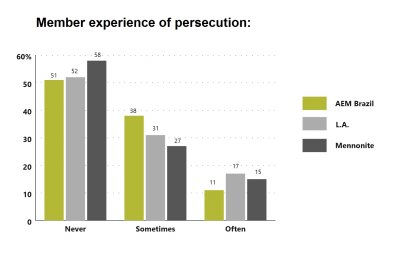
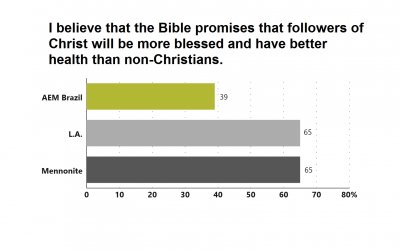
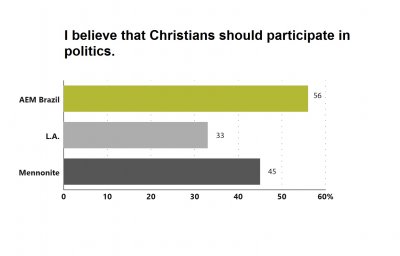
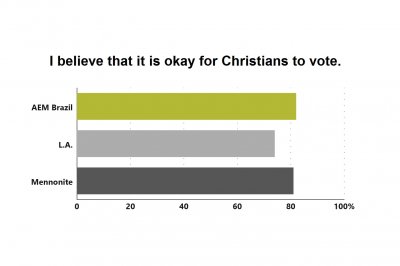
Convención de Iglesias Evangélicas Menonitas de Nicaragua
Congregations: 115 | Members: 5,282
Demographic Profile
- Eighty-three percent of congregations and 36 percent of members in the original sample participated in the GAP.
- The average size of congregations in the Convención de Iglesias Evangélicas Menonitas de Nicaragua is 45 members.
- Of those who participated in the GAP, 70 percent were women and 30 percent were men—this is the highest percentage of women of any GAP church in North or Latin America.
- Fifty-three percent of members reported living in rural communities and 47 percent in urban areas.
- The average age of respondents is 43 years and 59 percent of women are within childbearing age (18-45 years).
- Sixty percent of members are married, 22 percent are single, 10 percent are widowed (the highest percentage in Latin America), 4 percent are separated or divorced, and 3 percent are living with someone to whom they are not legally married.
- Fifty-five percent of respondents reported being homemakers (the highest percentage in North and Latin America), 21 percent are engaged in agriculture, 15 percent are in professional occupations, 7 percent have positions in a church, and 3 percent are engaged in manual labor.
- Seventy-nine percent have not completed a high school education. Twenty-one percent are high school graduates and 5 percent have graduated from college.
- Only 30 percent grew up in a home where one or both parents was a member of a congregation in the Convención de Iglesias Evangélicas Menonitas de Nicaragua.
- Seventy-one percent of respondents were baptized in a congregation of the
Convención de Iglesias Evangélicas Menonitas de Nicaragua.
I think it is necessary to learn of the experiences of other brothers and sisters in the global church family, recognizing that we each have weaknesses and strengths that we need to reinforce and improve.
–Research Associate Marcos Orozco
History
When the capital city of Managua was almost completed destroyed by an earthquake in 1972, Mennonite volunteers from the United States arrived to help in the reconstruction of the city. Their presence acted as a catalyst for earlier church plants and expanded the church’s reach through literacy and evangelism initiatives.
Later the civil war against Somoza and the triumph of the Sandinista Party left 50,000 dead and tremendous moral and economic destruction in their wake. The new revolutionary government imposed mandatory military service for the first time in Nicaragua, taking the church unawares. Neither the church nor its leaders were prepared to face this new challenge. The young people were taken against their will and obliged to fulfill their military service, although the Mennonite churches had proposed a conscientious objection option to the government.
In the midst of these difficult and adverse circumstances, the number of churches tripled. Today the convention sees its biggest challenges in shaping leaders and discipling new believers, as well as deepening its Anabaptist roots as a peace church in a context of violence and resource scarcity.
Challenges
Some of the churches were remote and hard to reach, which delayed distribution and implementation of the survey. In some locations there was a lack of understanding regarding the project.
Graphs
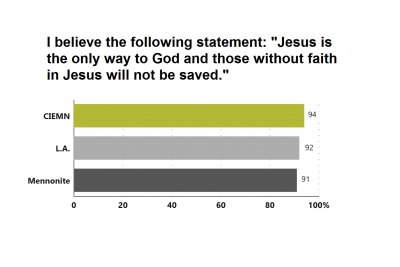
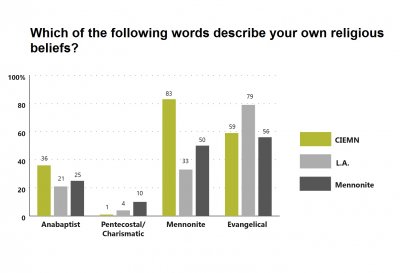
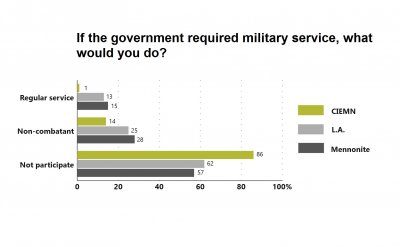
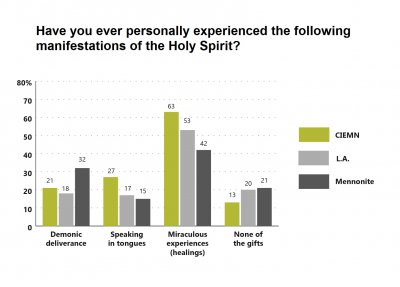
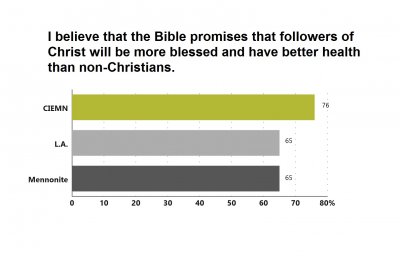
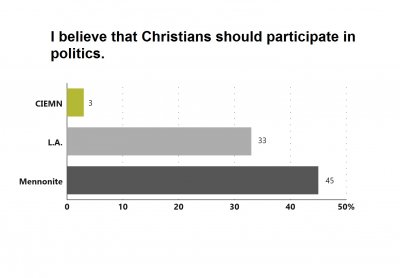
Iglesia Evangélica Menonita Argentina
Congregations: 52 | Members: 3,342
Demographic Profile
- Ninety-four percent of congregations and 33 percent of members in the original sample participated in the GAP.
- On average, congregations in the Iglesia Evangélica Menonita Argentina have 64 members.
- In the Iglesia Evangélica Menonita Argentina sample, 56 percent were women and 44 percent were men.
- The Iglesia Evangélica Menonita Argentina is a very rural church, with 96 percent living in rural communities.
- The average age of respondents is 48 years—making this church the oldest of all GAP churches in Latin America. Forty-eight percent of women are between 18-45 years of age.
- Sixty percent of respondents are married, 17 percent are single, 8 percent are widowed, 5 percent are separated or divorced, and 10 percent are living with someone to whom they are not legally married (the highest of the Latin American churches in the GAP for whom we have information).
- Among Iglesia Evangélica Menonita Argentina respondents, 37 percent are professionals, 15 percent do manual labor, and 33 percent are homemakers. Though largely rural, only 2 percent engage in agriculture.
- Forty percent have not completed a high school education, 44 percent have gone as far as to complete high school, and 16 percent are college graduates.
- Forty-five percent grew up in a home where neither parent was a member of a congregation in the Iglesia Evangélica Menonita Argentina.
- Sixty-six percent of respondents were baptized in a congregation of the Iglesia Evangélica Menonita Argentina and 30 percent in another church.

At the Elizabethtown GAP consultation I saw that most of the churches in Latin America were similar as well as in some other continents. The Global Anabaptist Profile has helped our churches see some of their similarities as well as some differences.
–Research Associate Delbert Erb
History
The Iglesia Evangélica Menonita Argentina is the oldest Mennonite church in Latin America. Mennonite missionaries from North America opened the first mission in 1919 in the rural village of Pehuajó, two hundred miles west of Buenos Aires. A Bible School in Pehuajó led to the ordination of several Argentine pastors and several single women who were commissioned as Bible readers. Pehuajó served as the center of Mennonite church planting and mission until the 1930s, when the economic crisis produced an exodus of rural people into Argentina’s urban centers, particularly Buenos Aires. By the 1950s Mennonite mission efforts had begun in the capital.
Following the establishment of the independent Iglesia Evangélica Menonita Argentina in the 1950s, North American missionaries and Argentine pastors and laypeople worked together in strengthening the church’s financial and organizational independence. Over time North American leadership withdrew and Argentine leadership increased. In more recent years the Argentine congregations have developed their own mission projects, and the church has slowly begun to grow in number and geographical area.
Challenges
The distance between the northernmost and southernmost congregations participating in the survey was more than 2000 km, requiring significant travel. Raúl Garcia assisted Research Associate Delbert Erb in implementing the survey in some of the southern congregations. Several congregations also opted not to participate in the survey, although alternate congregations were selected to replace them.
Graphs
